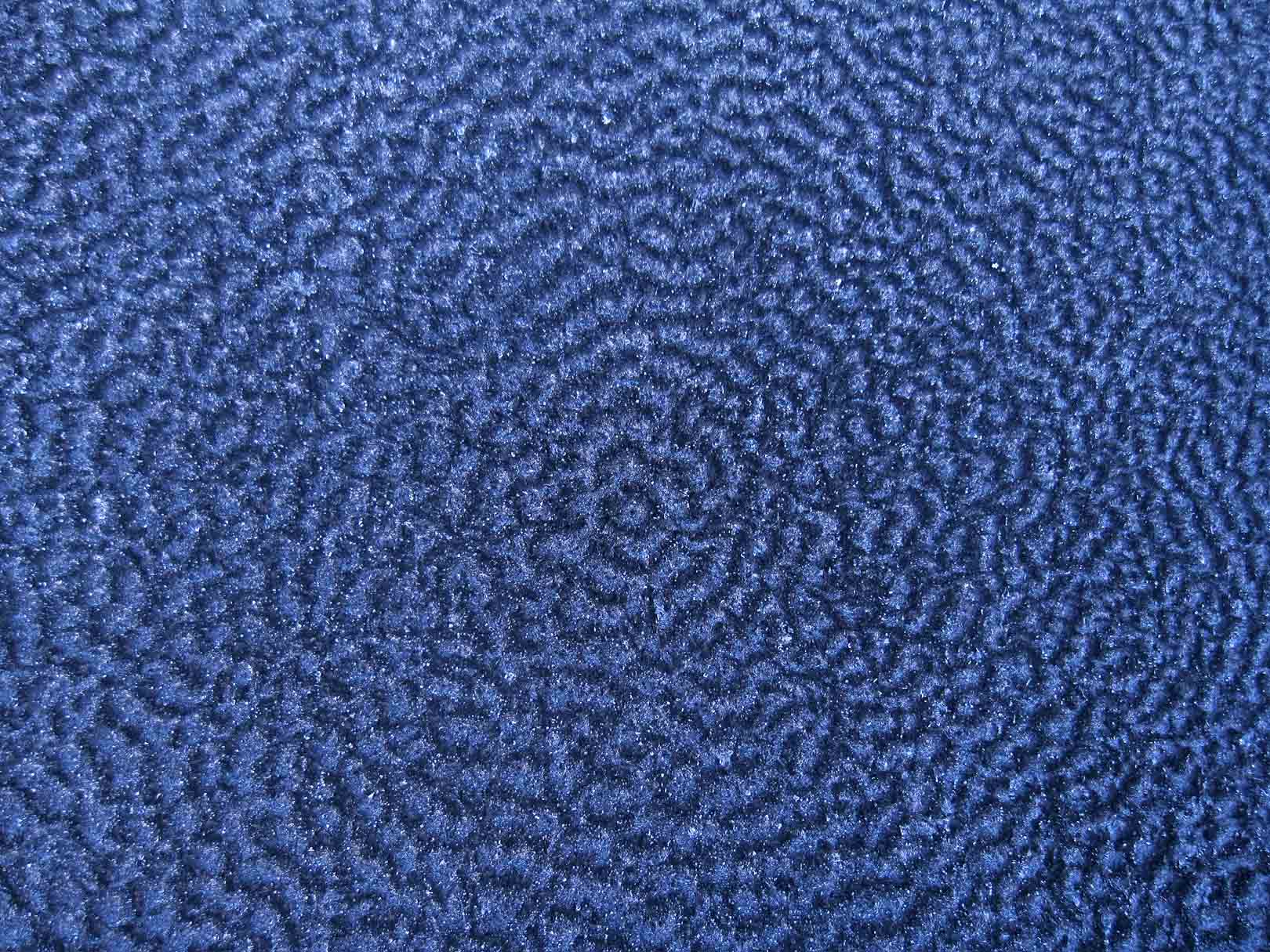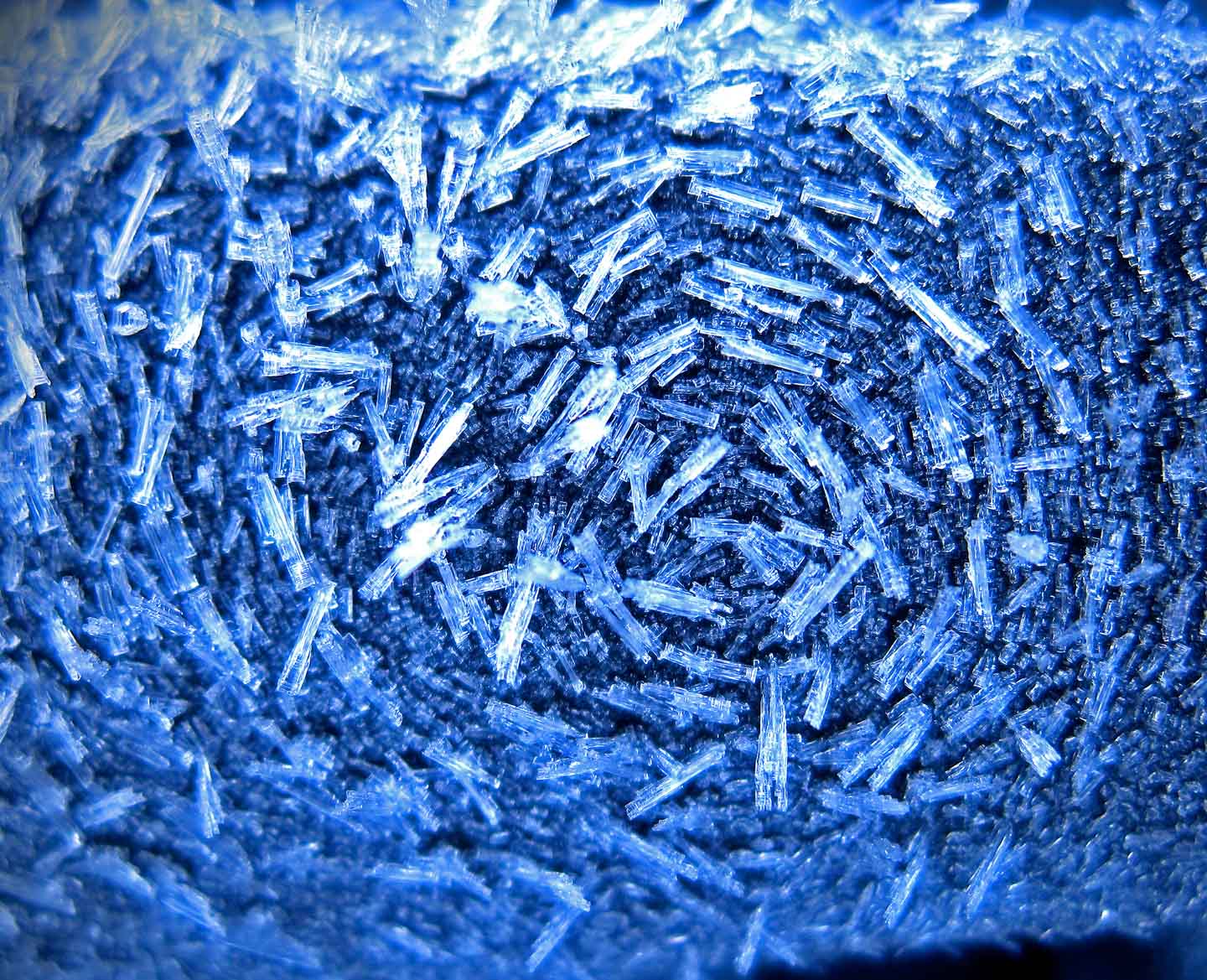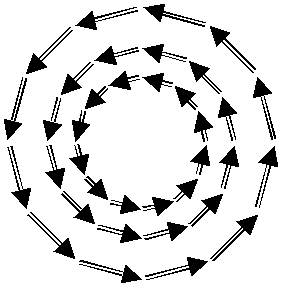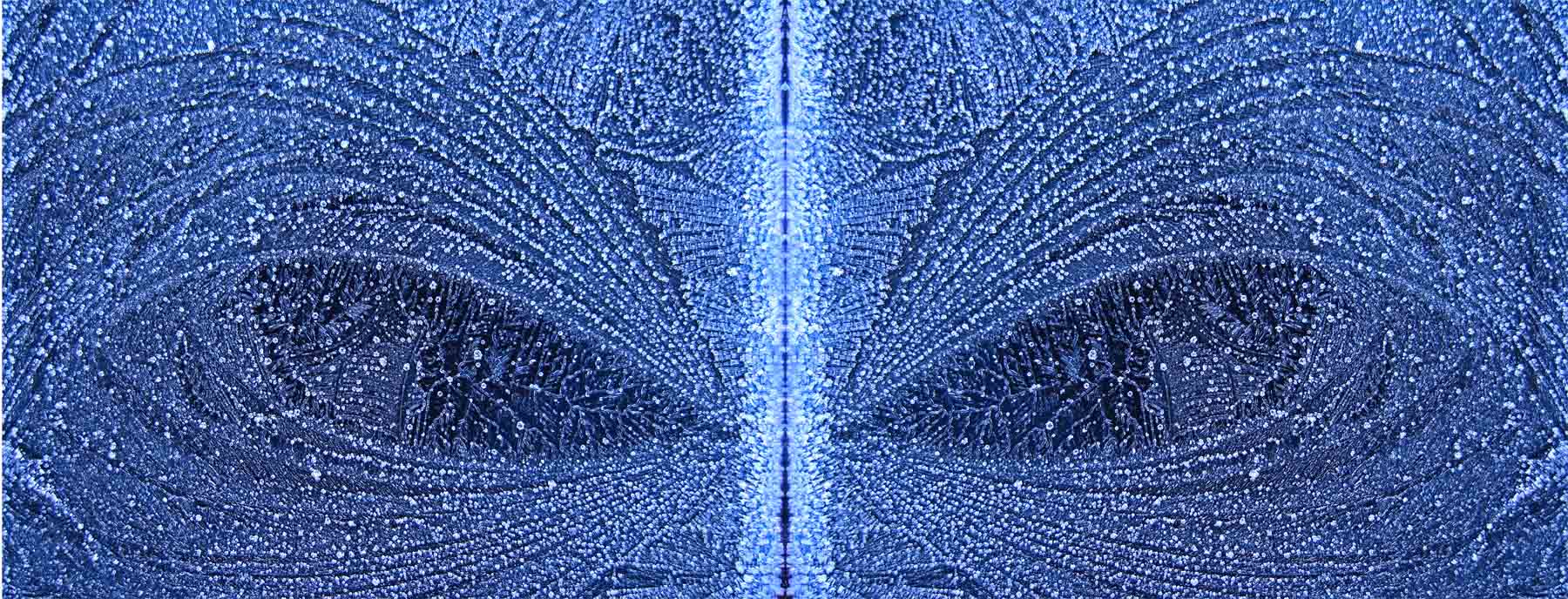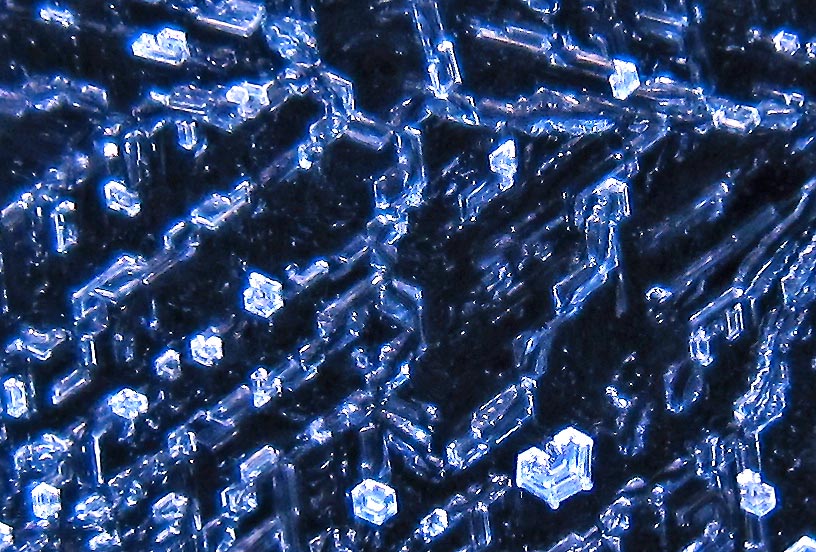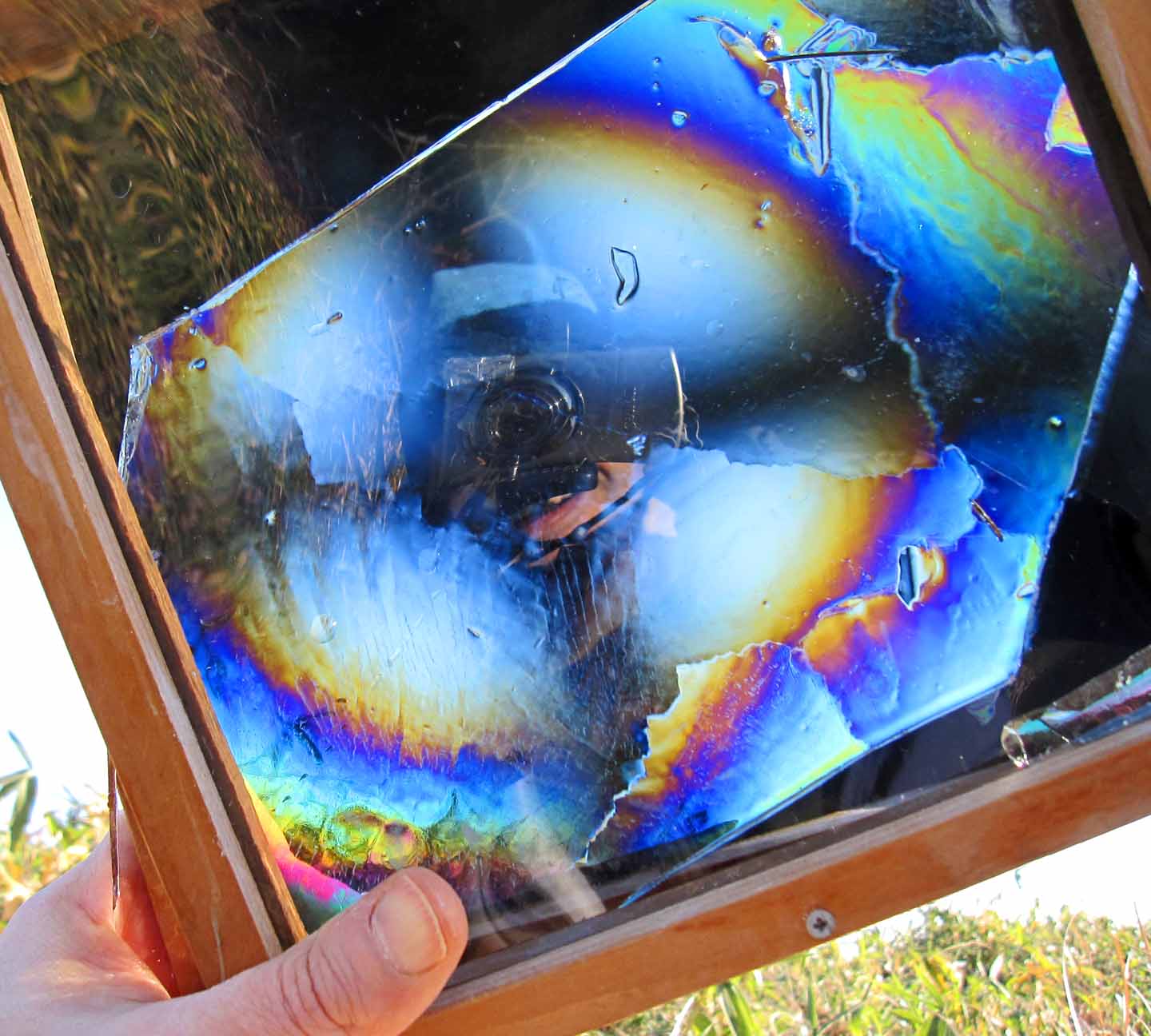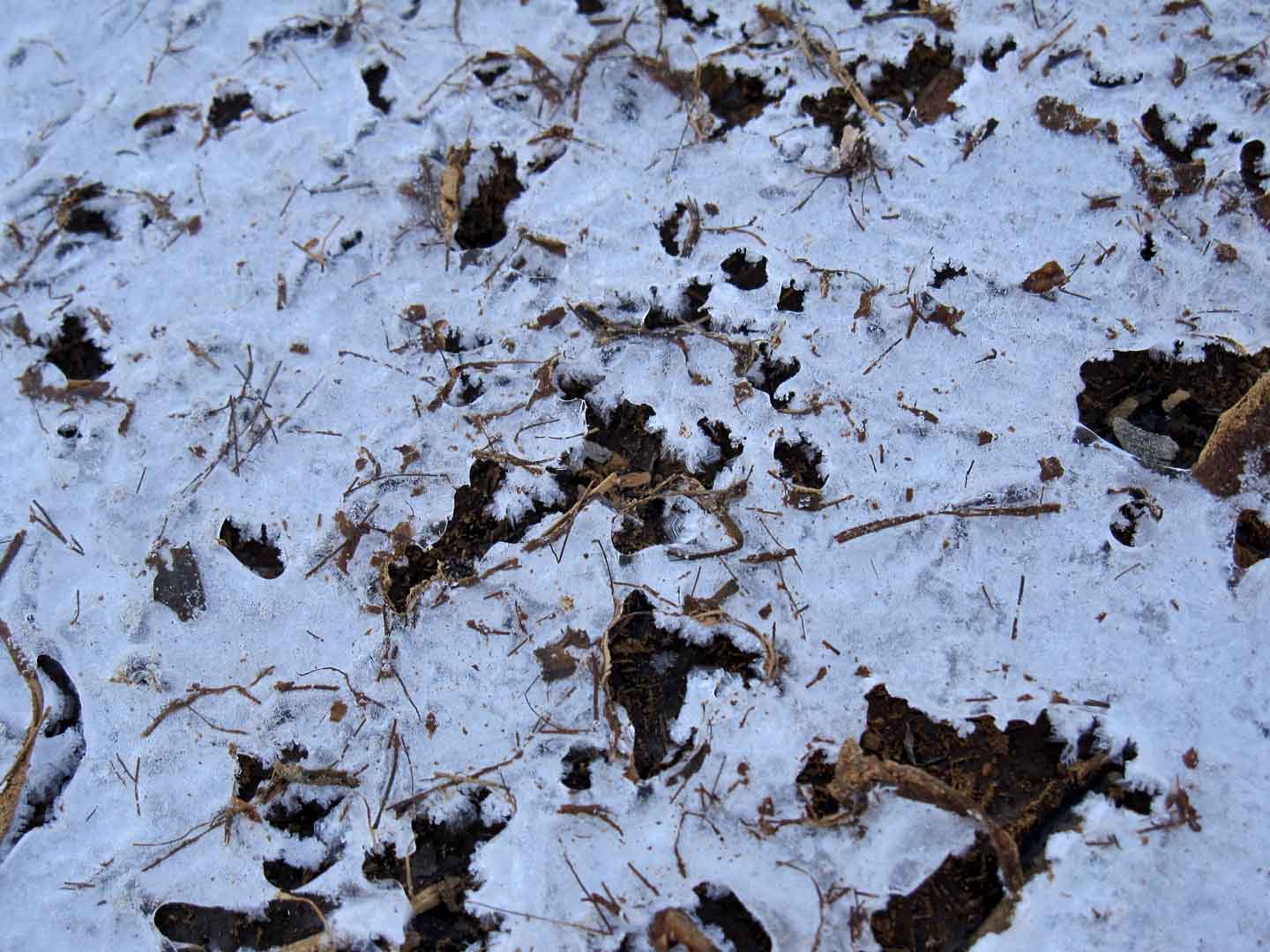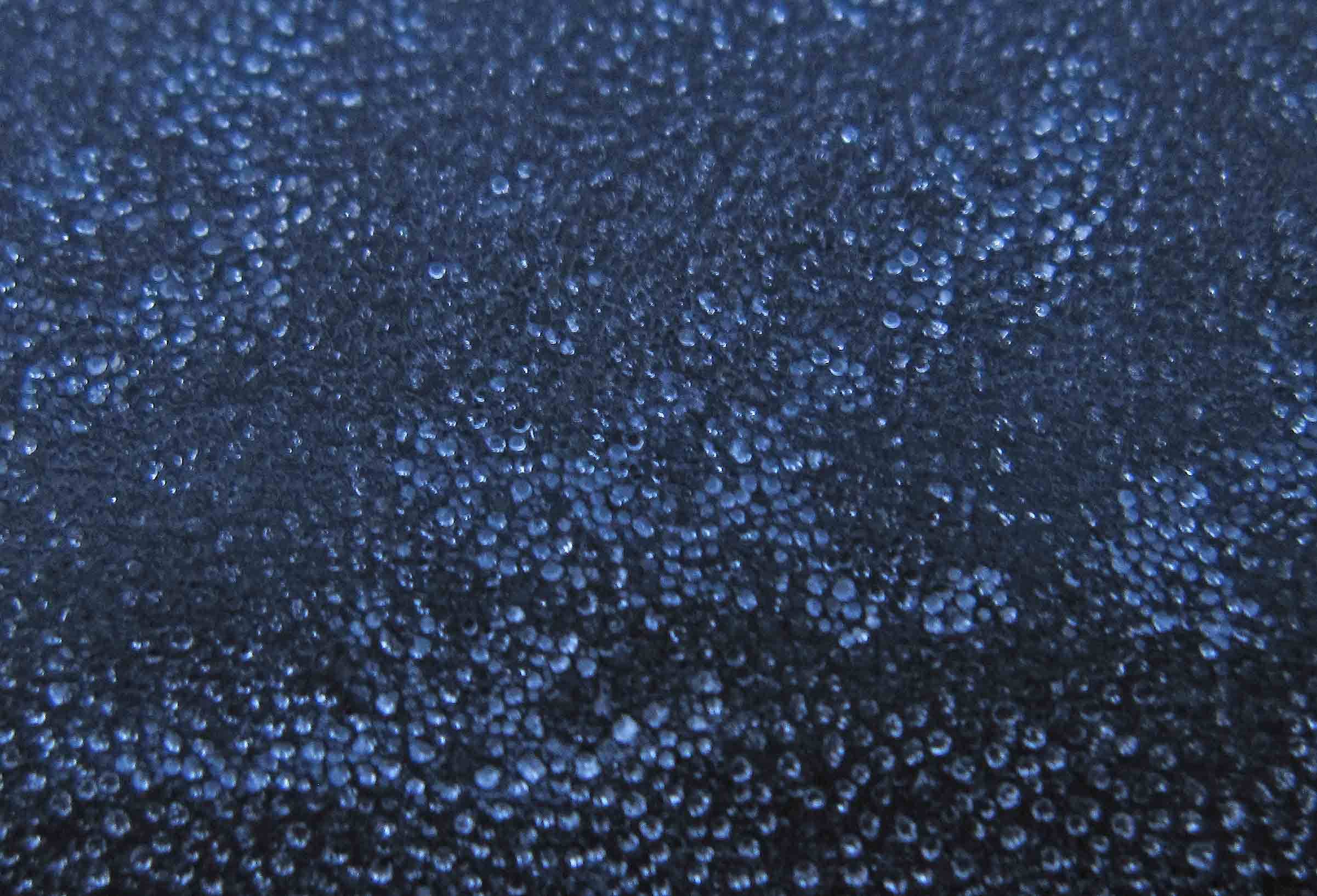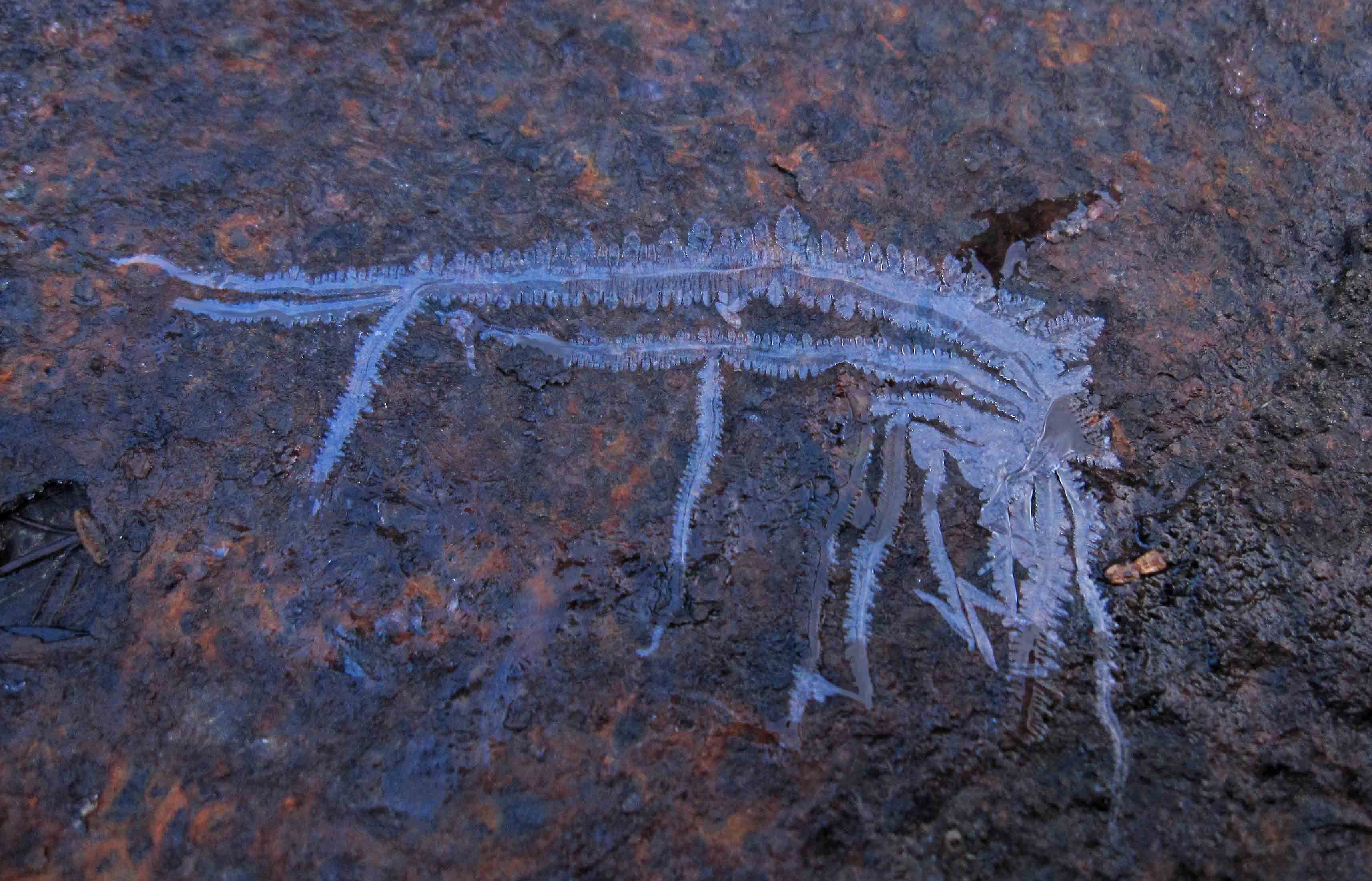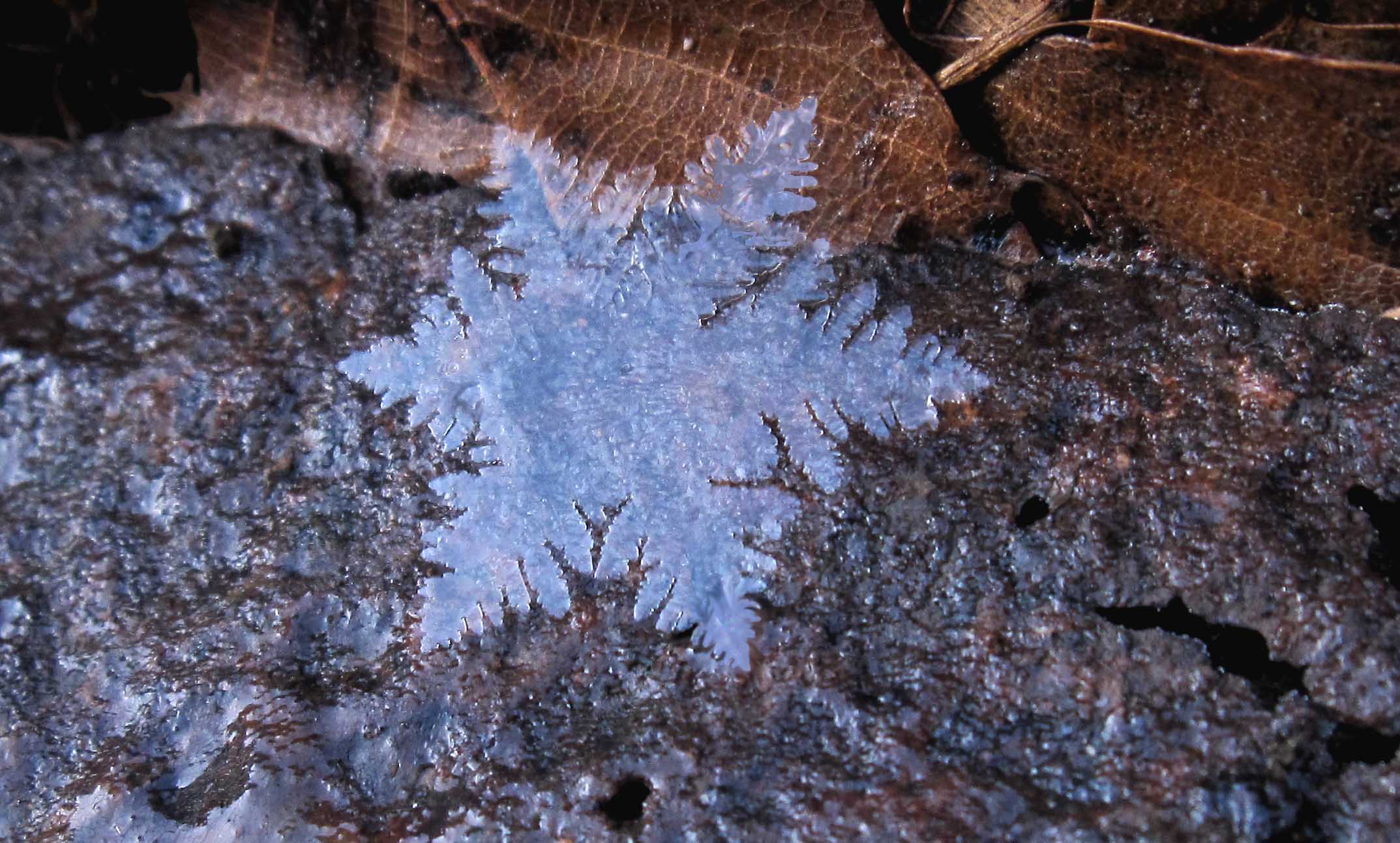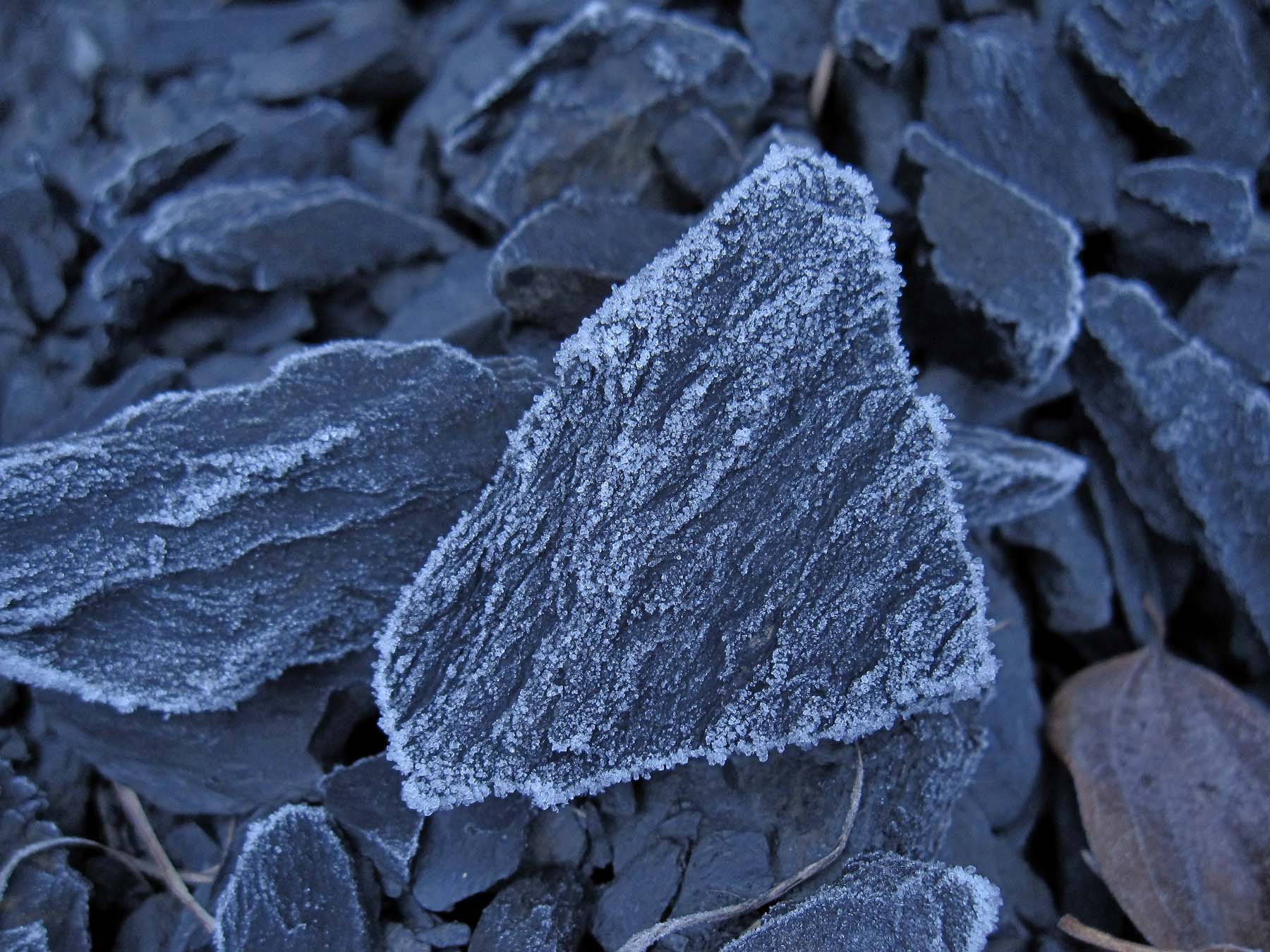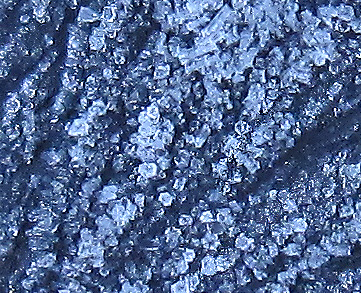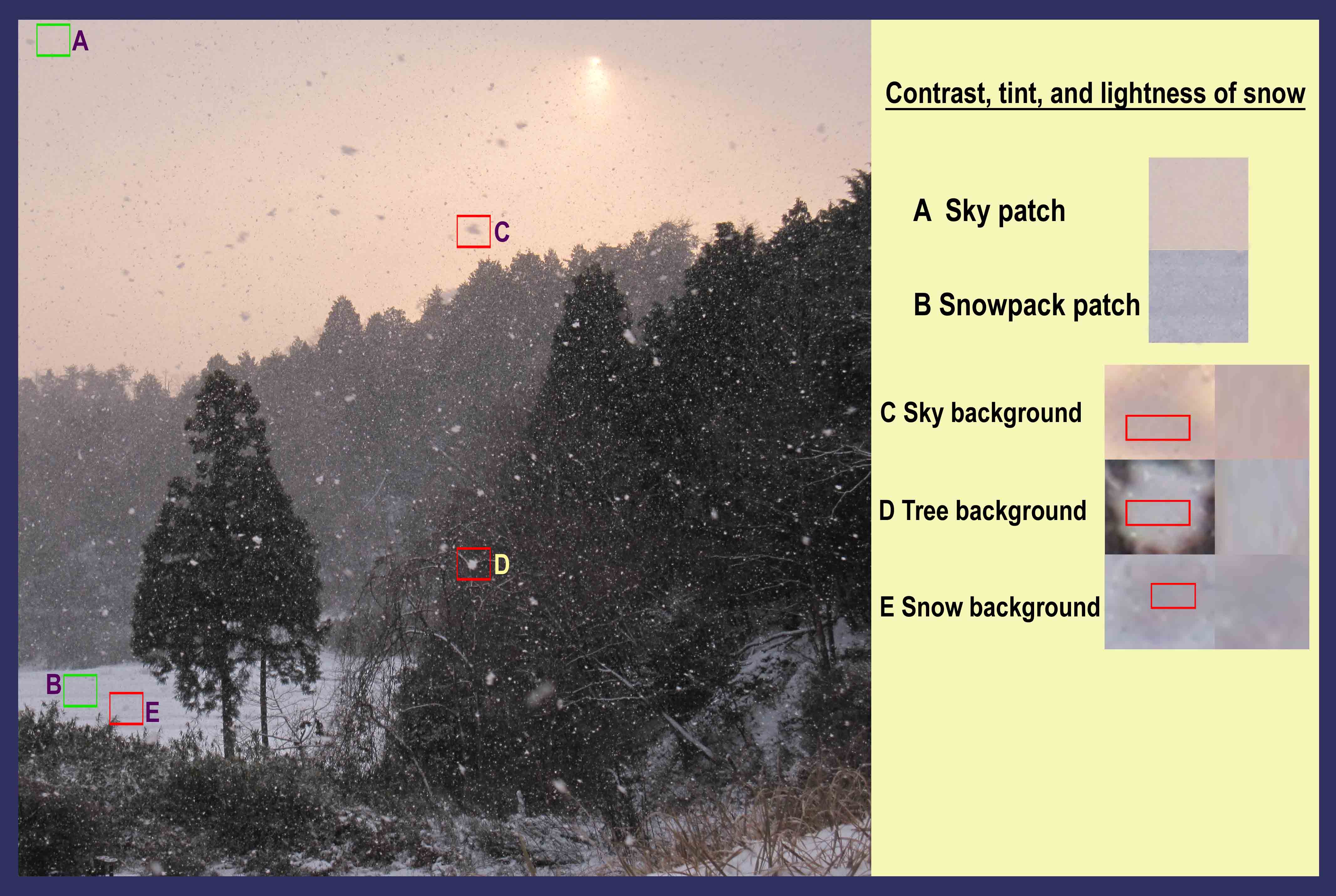Category: "Snow Science"
I am a giant snow crystal, imperfect thing of habit, bouncing along life's gusts,...
February 6th, 2010Some reviewers of The Story of Snow mistakenly call me the main author. I don't know why they make that mistake - Mark's role as the main author is clearly implied by his copyright on the dedications page and elsewhere. My role was just to check the text and make some suggestions.
But I am very glad he asked me to help. In fact, in 2004 I pitched an idea to some publishers that was similar in some respects to, though not as good as, The Story of Snow. My version was fiction. In it, a boy in his yard kicks up a bit of leaf dust, and we track the dust rising through a cloud, eventually to return to the boy's yard as a snow crystal. One publisher expressed some interest, asking me to turn it into non-fiction. I didn't bother.
Another way that Mark and I have similar ideas in that we both liken snow to people. In The Story of Snow, the uniqueness of each crystal is likened to our own uniqueness. I have thought about other ways snow resembles people; and in my background write-up for the Junior Library Guild, I mentioned some of them. Inspired by some of the nice science essays I read in the New York Times, I developed these resemblances into a little essay and submitted it to them. It didn't make the cut, but I think you might enjoy it. Here it is.
Seeing Ourselves in a Flake of Snow
The silently falling snow crystal can vanish in one’s breath, yet can build up into glaciers that carve mountains. Individually weak yet collectively strong; people are like that too. And if we look deeper into the little flake’s tumble from the clouds, we may see even more parallels to ourselves.
Consider its birth. A snow-crystal’s origin lies with some fleck of mineral or organic matter kicked up from the ground. Though most never get far, the occasional bit of dust floats high enough to be caught in a series of updrafts. Upward it floats, cooling all the while, until dew nucleates on its surface. The dust, like the irritant in an oyster that starts the pearl, becomes a miniscule speck, engulfed in a tiny yet growing ball of water – a droplet. This droplet may be as near to a perfect sphere as we are likely to find anywhere. But spherical perfection doesn’t last.
When the droplet cools below freezing, it enters a supercooled state in which it may crystallize into ice. But it cannot freeze right away. Think of the supercooled droplet as an unfertilized egg, needing a tiny ice ‘seed’ to transform into ice. These seeds, properly called 'ice nuclei',
Ripples
February 5th, 2010When there is no pebble tossed
No wind to blow
--Grateful Dead “Ripple”
I don’t know where to start on this one. For some time I’ve been seeing concentric circular patterns on car windshields and car bodies – bands of white spreading out from a central point like ripples in a pond from a tossed pebble. Typically, they spread outward 3-10 inches or so before meeting up with ripples originating from another spot.
When I try to zoom in on the individual crystals, I usually see only vague outlines with the occasional recognizable form. What could cause this pattern? Here's a clue.
Mystery of Whirlpool Hollows
February 3rd, 2010The hollow columnar crystals are oriented lengthwise along concentric circles, which strongly suggests that an underlying film froze with the same rotating crystal orientation. This is strange. To see why I think it strange, we need to specify crystal direction. Consider the ice-crystal optic axis, the length-wise direction of the columns (or the direction straight into a stellar-star crystal). If we draw the optic axis for each crystal as an arrow, then we would have something like the following picture.
When a film of water on a smooth surface like glass or a car roof freezes, the preferred crystal orientation is that with the arrow pointing straight up and out of the surface. So, I find the above pattern mysterious - why don't the arrows have any trend toward pointing upward? Why do all the arrows stay in the same plane? Another mystery is the fact that I’ve seen this same whirlpool pattern with about the same center spot on both side mirrors on more than one morning. Perhaps the whirlpool pattern arises somehow because the surface is curved. Or maybe films of water on plastic freeze differently than films on smooth metal or glass. For now, I’ll call this the mystery of whirlpool hollows.
- JN
Eyes and Dry Moats
January 22nd, 2010Though I appreciate seeing the old and familiar, when I venture outside on frosty mornings, I usually see at least three unexpected things. Three unexpected things before breakfast. A few days ago, the frost at first appeared more hoary than curvy, but when I peered over the top of a black SUV, I saw ice curves in the shape of an eye. Just for fun, I put an image of it next to a mirror-reversed copy, to give the following composite.
Call it the eyes of frost. Like me, you've probably seen curvy growth before, even if it didn't take the form of an eye. But let's venture into the eye of frost and notice something new: straight-segmented web-like growth.
I've never seen that before, and I never expected it.
The Maltese Cross in Pond Ice
January 21st, 2010A few days after my encounter with the pawprints and grey muck, one of the ponds did freeze over. After me and my camera spent about 30 minutes admiring this rare event, I went and ruined the complete glaze job by punching a hole in it. Although the top surface had lots of interesting curves and shallow grooves, the underside, only about 8-mm below, was flat and featureless. I suppose this is because the surface marking the melt-line (i.e., 0 degrees C) is flat. But when I put a piece of pond glaze between two polaroid sheets, with one polaroid 'crossed' to the other, I saw an odd sight.
The large black "X" that appears here is sometimes called the "Maltese cross". Elizabeth Wood, in her classic little book "Crystals and Light", calls it the "black cross". And when I looked up some cross shapes online, I thought the above figure looked more like the German "iron cross". Anyway, whatever you call it, it doesn't seem to fit the scene.
Strange Pawprints in the Ice
January 15th, 2010On account of the recent cold spell, I went up the hill behind us in search of a glazed-over pond. Ponds can have interesting freezing patterns and, if the ice is thick enough, a little excitement. I've never seen these ponds freeze, but then again, I've never thought it likely enough to warrant a visit in winter. The first two ponds I visited (technically, man-made reservoirs for flooding the rice fields) had ice only over a small section at one end. I had better luck with with a drained pond. This 'pond' looked more like a dirty mud pit, but I saw evidence of ice on one side. So, ignoring the warning signs (more on that later), I walked down and around to the icy end. From eye-level, and even from a crouch, this ice looked like snow.
But except for the holes that exposed the dirt underneath and the twiggy matter on top, the surface was smooth and level, like that of a glazed pond or puddle. Indeed, a partially glazed-over pond is probably what it had been. The whiteness was due to some fuzzy growth underneath that I could see in the large gaps (see the image below).
Snakeskin Frost and Other Curiosities
January 12th, 2010You can see a lot on just one black car. The nearly uniform appearance of white frost shows, upon closer inspection, a variety of forms. The first black car of yesterday morning didn’t seem so striking, and I considered passing it by. But, thinking of something that happened a few weeks ago, I hung around and took some pictures. You see, a few weeks ago, I discovered in my morning photos one picture that looked like snakeskin. It was the only one like it in my entire collection, but unfortunately a bit fuzzy. So, I swore thereafter to always look at the photos as I take them, then if something really new comes along, I can take many shots and hope that at least one is in good focus. Luckily, I stumbled upon the snakeskin frost on this car, but once again, only took one shot (alas - it also looks fuzzy). I guess I'll never learn.
If you click on the picture and zoom in, you'll see that the crystals are shaped like thin disks, laid down nearly flush against the car roof, like the scales on a snake’s skin. The bright crystals are the ones oriented to reflect the sky, whereas the dark crystals have a different orientation. These disks are tabular forms like the hexagonal plate, except without the flat, prismatic sides. But the same roof also had columnar forms:
They Came From Out of the Tub
January 8th, 2010Last night it rained, but the skies cleared before morning, letting the air temperature drop to about 2 degrees C. The weather, it seemed, would be perfect for lacy white frost patterns on cars. But it didn't quite turn out that way. A little bit before sunrise, I went out on my rounds. I took a few pictures of ice on parked cars and then headed for the rice fields. Neither tub had ice, so I walked to the abandoned car on the other side of the roadway. Nothing of note there either, but in those few minutes a blade of ice had started across one tub. Soon there were several. With a stick, I went under one blade, lifted it up, and noticed the thin serrated fingers that had been growing into the water, hidden under the surface. The disturbance of the water surface caused the growing mesh of ice lines to drift, unattached to the tub walls. I don't see this in puddles. In the puddles, the ice is always anchored to the shore, presumably because the ice starts from the shore, where there are more things to nucleate from.
In the tub I saw a curvy piece and fished it out. Laid out on the rusted lid of a nearby barrel, the ice looked strange, like a fossil of some prehistoric creature.
The critter is about 3-4 inches head to tail and paper thin. As the crystal grew from liquid water, called 'melt' by material scientists, it is said to be "melt-grown". I call such crystals "puddle crystals". Anyway, soon ice was starting on the other tub. Out in the middle of an open patch of water, I saw a small hexagon. With a stick I tried lifting it out. I found that the central hexagon had six large branches that had been hiding just under the surface. But the crystal slipped off my stick and cut under the water's surface - never to be seen again. Needing something better than a stick, I found a piece of a plastic lid that had been left in a nearby ditch and tore off a piece. Then next time I saw a small, isolated hexagon, I lifted it out and put it on the barrel lid. See the photo below.
Though the central hexagon that I could see on the water was less than a half inch across, the full crystal was about one and a half inches across. Curious how the water would cover up all six branches symmetrically... Anyway, despite the large width of our 'puddle star', it too is paper thin. And being so flat and featureless on both sides, it evenly reflects the bluish skylight. The serrated pattern on the branches make this crystal a dendrite, like the dendritic snow crystal. But a puddle crystal grows much faster than a snow crystal because the melt (i.e., liquid water) is more densely packed with water molecules than the air from which snow grows. Also, when a snow crystal branch grows, it removes water vapor from the nearby air. This depletion of vapor is most severe near the base of the branches, and thus snow-crystal branches hardly widen - they mainly grow at the tip and at the tips of the side-shoots (called side-branches). But the melt is never depleted of water molecules, so the branches of puddle crystals keep widening until they merge. Another difference between puddle crystals and snow crystals is that puddle crystals viewed broadwise have a curving outline. The snow crystal usually has a polygonal outline, that is, made from straight lines.
- JN
The Crystalline Beard
January 5th, 2010I have very often in a Morning, when there has been a great hoar-frost, with an indifferently magnifying Microscope, observ'd the small Stiria, or Crystalline beard, which then usually covers the face of most bodies that lie open to the cold air, and found them to be generally Hexangular prismatical bodies…
The above passage, from Robert Hooke's Micrographia (1664), describes almost exactly what I do on sufficiently cold winter mornings. Though I don’t have a microscope, I have a Canon Power Shot camera with the macro feature that allows me to zoom in on tiny objects. (The best gift I ever got, and possibly the best thing an amateur naturalist like me could ever receive.) From afar, most hoar frost looks similar – a dusting or coating of white on any surface that can cool enough for vapor to deposit. The effect on an object can be beautiful, looking like an artist has applied a white highlighter to the small protrusions and ridges on the object, as in the rock below.
The rock is about an inch and a half across. The crystals range in size, but the larger ones are about as wide as three thick hairs (300 microns) laid side-by-side. One can see in the enlargement below that many of the crystals have a hexagon shape – like a snow crystal.
A better example showing hexagonal crystals is in the frost I saw on the roof of a black car a few days ago.
White Snow, Black Snow, Pink Snow, Blue Snow
January 3rd, 2010Hands down, my favorite book for browsing is M. Minneart’s The Nature of Light & Color in the Open Air. This small, easy to carry (and cheap if you get the Dover edition) book has 233 short sections on things one can see 'in the open air'; for example, twinkling of stars, the color of lakes, and the rainbow. Section 93 is on black snow, in which he notes how the apparent whiteness of a falling snowflake seems to change from blackish to whitish when the flake’s background changes from the grey sky above to a darker background below (such as dark-green trees). It is a simple enough observation, but I didn’t bother looking for it until a few years ago. Indeed, the illusion of whiteness change is strong. Look for it next time you go out when it's snowing.
On a walk on Jan. 2, I took the picture below because I thought the sun poking through the cloud was interesting, and then later realized that I could easily compare the whiteness of the flakes. Minneart's next section describes a related contrast illusion that also can be tested in the picture - the feeling that the snow on the ground is brighter (or whiter) than the sky above. See if you can shake this illusion next time you go out in the snow.
The sky in the picture is not uniformly grey, as Minneart assumes in his discussion, but is a yellowish-red at and below the level of the sun. So, for the comparison of the sky brightness to the snow brightness, I chose a patch of sky of sky at the place within the green box marked 'A' in the upper left, where the sky is darker. (To see this and other boxes, you can click on the picture to enlarge it.)


